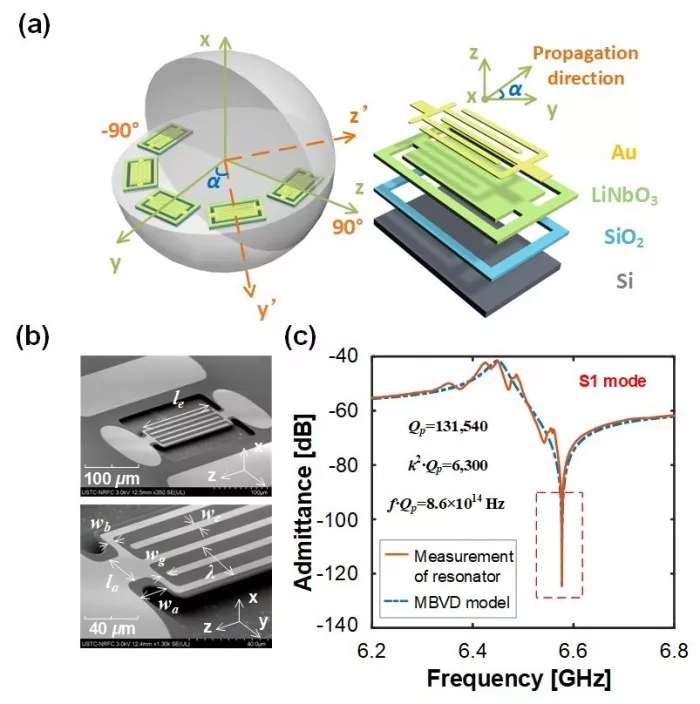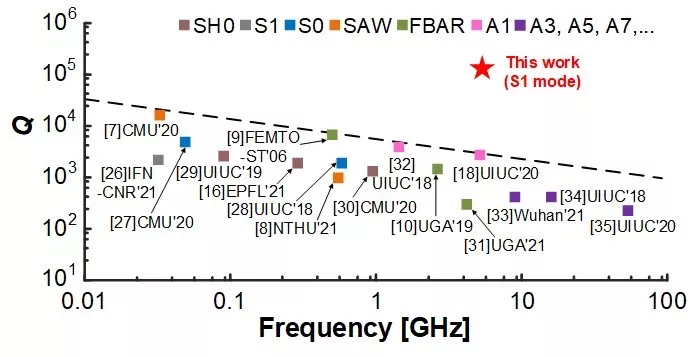Recently, the website of the University of science and technology of China (hereinafter referred to as "University of science and technology of China") announced that the University of science and technology of China has made important progress in the field of 6G filter. This research achievement was designed and realized by the research team of Professor Zuo Chengjie of the school of microelectronics on the lithium niobate (LiNbO3) piezoelectric film. The high-frequency (6.5 GHz) MEMS resonator with a Q value of more than 100000 has increased the Q value by two orders of magnitude compared with the existing work in the literature.
Among them, Professor Zuo Chengjie is the corresponding author of the paper, and Dai Zhongbin, a doctoral student of the school of microelectronics, is the first author of the paper. This research work has been supported by the national key R & D plan and the basic scientific research fund of central universities. It has also been supported by the school of microelectronics of China University of science and technology, the micro nano research and manufacturing center of China University of science and technology, the Institute of advanced technology of China University of science and technology and the Key Laboratory of wireless optoelectronic communication of Chinese Academy of Sciences.
It is reported that the relevant achievements were published online on May 16 in IEEE electron device letters, a well-known journal in the field of electronic devices, under the title of "ultra high qlithium niobate resonator at 15 degree three dimensional Euler angle".
The researchers proposed a method based on three-dimensional Euler angle α Design and fabrication of high frequency MEMS resonators on X-cut single crystal lithium niobate piezoelectric films. By designing the electrode structure of the resonator, the S1 vibration mode working at 6.5 GHz is excited, and when the sound wave propagation direction( α) At 15 °, the quality factor (QP) at the parallel resonant frequency (FP) of the resonator is as high as 131540, and the corresponding excellent values K2 · QP and FP · QP of the resonator are 6300 and 8.6 respectively × 1014hz (Figure 1).

Figure 1 Structural design and performance test of new MEMS resonator: (a) definition of three-dimensional Euler angle; (b) SEM photos of the prepared resonator; (c) 15 ° resonator admittance curve test results
As shown in Figure 2, compared with other resonators working in similar frequency bands in recent 10 years, the new MEMS resonator increases the Q value by two orders of magnitude, and breaks through the resonator merit limit of the product of resonant frequency and Q value (f · q) which is difficult to improve synchronously for the first time. More importantly, the related work has successfully found a new mechanism that can regulate the dielectric loss and acoustic loss of Lithium Niobate Thin Film by using three-dimensional Euler angle, which opens up more possibilities for micro nano devices in the application fields of high-frequency wireless communication, medical ultrasonic imaging, intelligent information processing and Internet of things sensors in the future.

Figure 2 Comparison of Q value between new MEMS resonator and other lithium niobate resonators in recent 10 years
(proofreading / July 7)